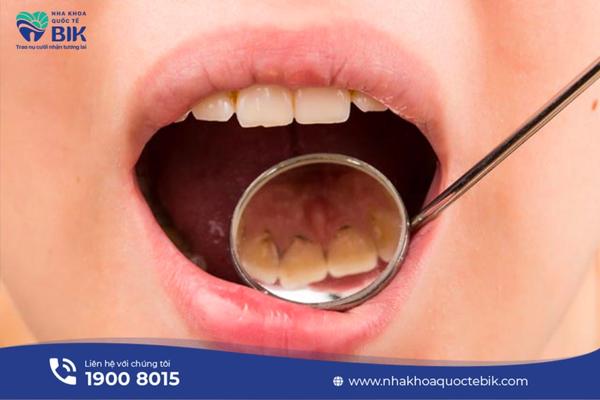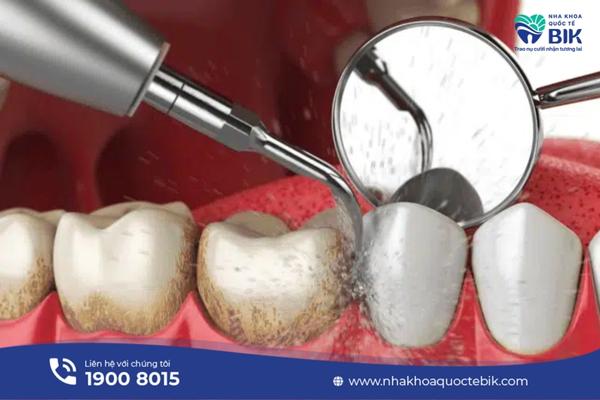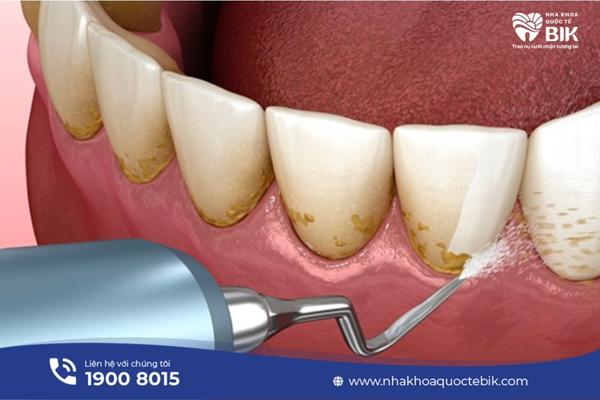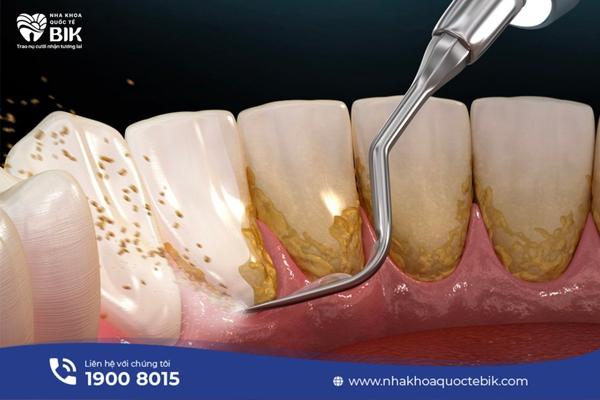Although it lies deep in the tooth structure and cannot be seen, the dental pulp is considered the heart of the tooth, nourishing healthy teeth. Therefore, if the dental pulp is damaged, infected or dead, it seems that the tooth is no longer as strong as normal. Therefore, it is necessary to promptly remove the tooth pulp to ensure that the tooth is not further weakened, while also protecting the surrounding teeth from being attacked by bacteria in the inflammation.
1. What is a root canal?
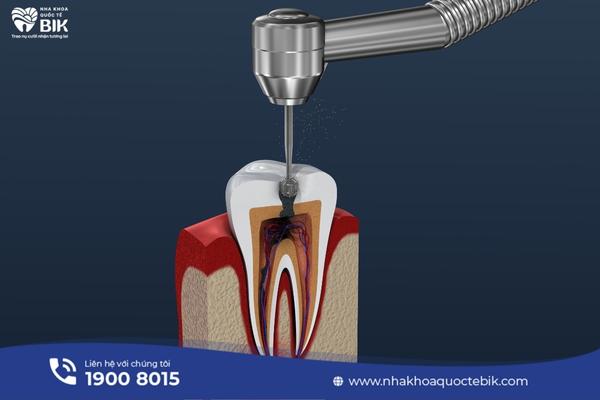
The dental pulp is a connective tissue consisting of blood vessels and nerves located inside the tooth core and surrounded by dentin and enamel. The dental pulp consists of two main parts: the pulp chamber and the root canal, which are responsible for providing nutrients to the tooth. When the dental pulp is infected, it will have a negative impact on the tooth’s supporting structure and in the long run, the tooth will not be provided with enough nutrients. Over time, the tooth will weaken and need to be removed.
In dental treatment, root canal treatment is often limited as much as possible because the pulp is considered the life source of the tooth. However, in cases where the pulp is damaged, root canal treatment is considered the only solution to prevent dangerous consequences later. So, root canal treatment is the technique of removing all damaged tooth pulp, cleaning the gaps in the tooth due to lack of pulp and then filling it with specialized dental materials.
2. When should root canal treatment be performed?
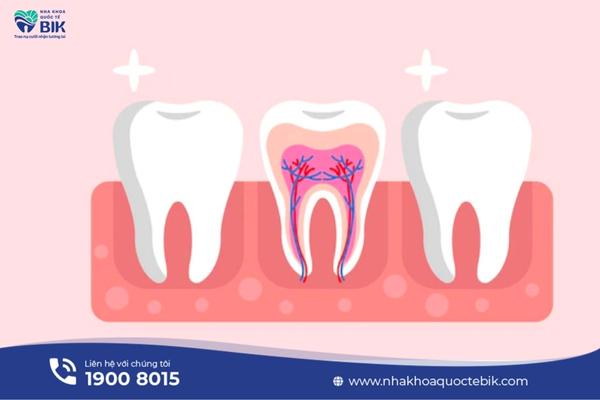
Root canal treatment is usually only indicated when the tooth pulp is severely damaged, necrotic or completely dead. When to remove the pulp is clearly shown through the following symptoms:
– Over time, the pain will gradually increase and when touched, the tooth may feel loose
– The pain can spread to the temples and often appears in the evening, the pain will often not subside even after using painkillers
– The teeth become sensitive, aching when exposed to foods that are too hot or too cold
– The gums are swollen and no longer pink as usual
– White pus pockets appear under the tooth root, although there is no pain, if not treated early, it will cause bad breath
3. Does root canal treatment have any effect?
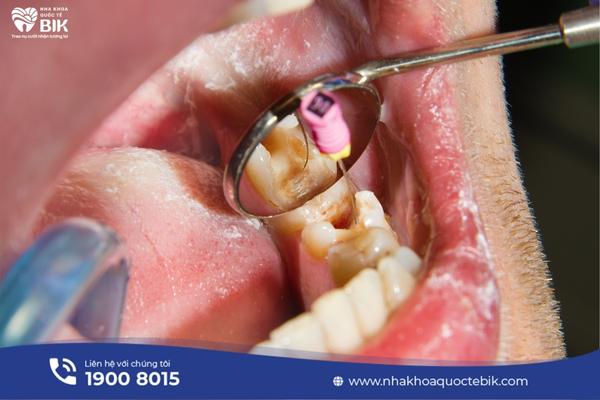
Because the root canal is a very important component of a tooth, if the root canal is infected or necrotic, the patient will feel pain and discomfort, so root canal treatment is very necessary to end the above condition.
The root canal contains nerves, so when the root canal is removed, the tooth will no longer be able to feel hot or cold temperatures. At the same time, the tooth that has had its root canal treated will no longer be as strong as before and will easily break or chip when eating foods that are too hard or too chewy. However, all of the above does not affect oral health or overall health. It can be overcome by strictly following the dentist’s instructions on oral care to keep the teeth healthy.
While there are some effects on the teeth after root canal treatment, if root canal treatment is not performed when indicated, the consequences are much more serious. If root canal treatment is not performed when necessary, the infection will spread more widely, bacteria can eat deep into the tooth root causing apical periodontitis, in the worst case, it can lead to jaw bone loss. In addition, they can spread to attack other teeth and cause a series of other oral diseases.
4. Root canal treatment process
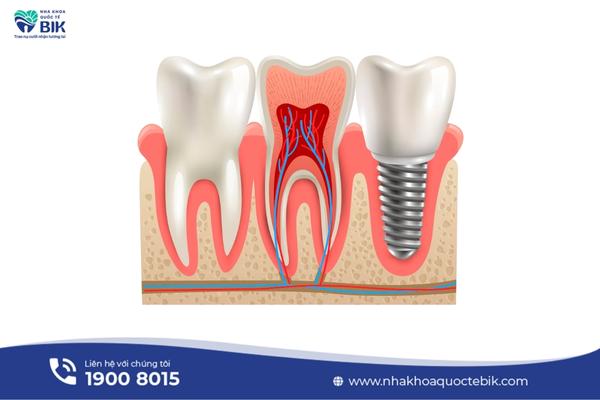
A standard root canal treatment process usually includes the following basic steps:
4.1. General examination
First, the doctor will conduct a general examination of oral health with the naked eye, then take an X-ray to check the specific condition of the dental pulp. Based on the film taken, the doctor will know the detailed condition of the damaged dental pulp, thereby making a diagnosis and planning a detailed treatment.
4.2. Anesthesia
After the oral cavity has been cleaned, the doctor will inject an anesthetic to ensure that the patient does not feel pain and feels more comfortable and secure during the root canal procedure.
4.3. Isolating the tooth
The doctor will isolate the tooth that needs root canal treatment from the oral cavity by placing a rubber base to prevent the risk of infection due to saliva that can penetrate the tooth. The rubber base will now help limit the situation of root canal treatment medicine, tools, and root canal cleaning solution falling into the mouth.
4.4. Root canal treatment
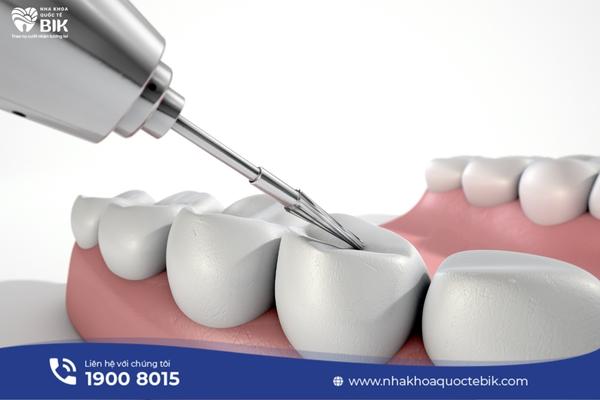
A specialized drill will be used to open the root canal according to the size that the doctor has calculated in advance. After opening the root canal, the entire infected pulp will be removed and the root canal system will be cleaned before the tooth is filled.
The number of times the patient has to visit the dentist until the treatment is complete depends on the condition of the pulpitis, whether the root canal system is easily accessible, etc. Between treatments, antiseptics will be placed in the root canal, and the tooth will be temporarily filled to prevent further infection.
4.5. Tooth filling
After the pulp has been completely cleaned and the infection has been cured, the dentist will fill the root canal with a specialized material or can choose to cover the tooth with porcelain to ensure the longevity of the tooth depending on the customer’s choice.
5. Does Root Canal Treatment Hurt?

During the root canal treatment, the doctor will inject anesthetic into the tooth that needs root canal treatment and the surrounding area, so most patients do not feel any pain when performing this technique. However, the pain will gradually appear when the anesthetic wears off.
This painful and uncomfortable feeling will last about 3-5 days after root canal treatment. In addition, the tooth will also become more sensitive and easily irritated than usual. At this time, depending on the patient’s condition and constitution, the doctor will prescribe some pain relievers in the correct dosage.
If the pain does not subside after a few days or the gums show signs of swelling and redness, you should go to the dental facility for a check-up to make sure the wound is not infected.
6. How long does a root canal tooth last?
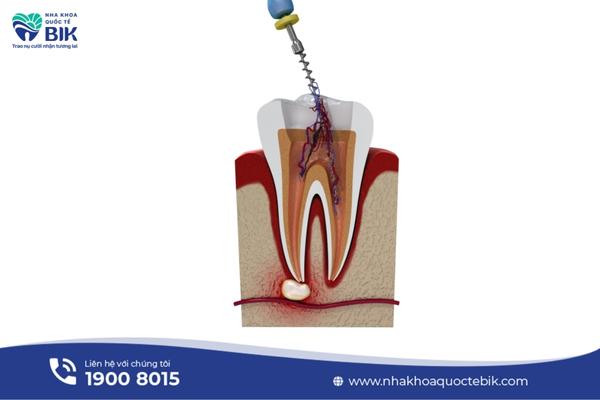
Teeth after root canal treatment will become much more vulnerable, so the life of the tooth will depend a lot on the tooth protection method that the customer chooses after root canal treatment:
6.1. Root canal treated teeth are filled
Teeth filling is a fairly simple dental technique, the holes caused by root canal treatment on the tooth will be filled with specialized materials. After filling, the tooth will have the same shape and function as before, without causing discomfort or hindering the chewing process. However, in this case, the real tooth will have to bear the effect of chewing force, so after only about 3-5 years, the filling material will fall off and the real tooth, which is not as strong as before, will also suffer certain damage.
6.2. Root canal treated teeth are covered with porcelain
Porcelain is a fairly durable material and has high load-bearing capacity, so root canal treated teeth covered with porcelain can last up to 10-15 years, even permanently for some high-end porcelain types.
The outer protective porcelain layer will help protect real teeth from bacterial attacks, preventing food particles from getting stuck in the teeth, increasing the risk of infection. In addition, porcelain crowns will bring high aesthetics, making customers more confident when communicating.
7. Complications that can occur after root canal treatment

In fact, only in cases where the dentist does not completely clean the root canal or does not control the infection of the tooth well will the following complications appear:
7.1. Infection
Apical infection is one of the possible complications. At this time, the gums of the treated tooth area will protrude, when pressed, pus will flow out, called a fistula. There may not be any pain, but if an X-ray is taken, there will be an infection at the apex of the tooth.
7.2. Jaw bone loss
Apical infection progresses quite silently and painlessly, initially only a small infection and only appears at the apex of the tooth. Over time, the infection will spread to neighboring teeth, forming a cyst in the jawbone and gradually the cyst will damage the tissues around the tooth. If not treated promptly, jawbone loss and massive tooth loss are the most serious consequences that can occur.
7.3. Teeth are prone to cracking
After root canal treatment, teeth are often more brittle and prone to cracking because there is no longer any pulp inside the tooth. In many cases, cracked teeth will be extracted.
8. Oral care after root canal treatment

The following should be noted to help teeth recover quickly after root canal treatment:
8.1. Monitor the pain
Pain and discomfort after root canal treatment are inevitable, so patients need to pay attention to monitor the pain, if it lasts too long, see a doctor for support.
8.2. Appropriate diet
A diet should be established to minimize the impact of chewing force on the tooth that has just had a root canal. Avoid using foods that are too hard or too chewy to protect the tooth from damage in the first few days after the root canal.
8.3. Proper oral hygiene
Brush your teeth twice a day with a soft-bristled toothbrush, combined with dental floss and mouthwash to completely remove food particles that may be stuck between teeth.
Thus, root canal treatment is a relatively complicated technique and requires a lot of techniques as well as experience of the doctor to be able to complete the root canal safely. Therefore, choosing a reputable dental clinic is very important to prevent possible complications.


